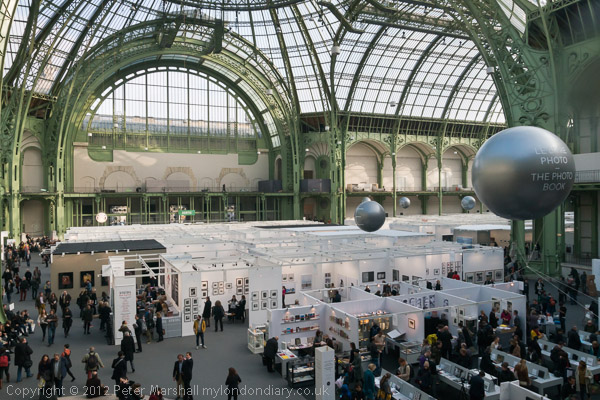I seldom travel outside of London to cover events, partly because there is so much to do inside. Greater London covers quite a large area, a little over 600 square miles and has a population of over 8 million, so there is no shortage of stories, and my own definition of London is a little wider than the official designation. I still consider myself a Londoner although because of a little gerrymandering in the 1960s the town where I live found itself left out in the cold, attached to an alien Surrey with which it felt little in common (and indeed an ancient rivalry, still fought keenly at Lords and the Oval.)
But London is one of the most cosmopolitan of cities, with a population including people from every country in the world, and – according to the 2011 census – populations of over 20,000 for some 27 of them, and pretty large numbers from quite a few more. One group that doesn’t make it into that top 27 are New Zealanders, but there are still quite a few of them, and on one day a year Kiwis come out on mass to celebrate Waitangi Day with a Circle Line pub crawl which culminates in a haka opposite the Houses of Parliament.
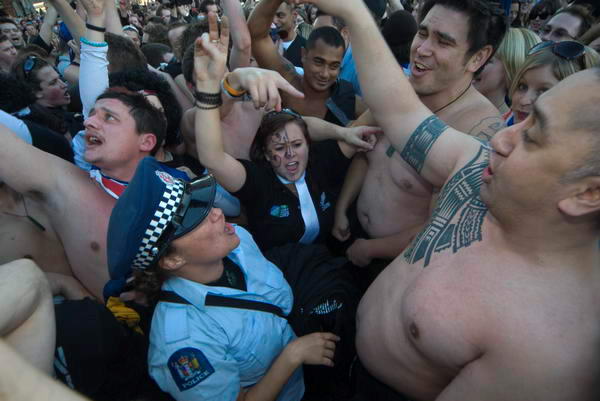
I didn’t photograph them this year, partly because this year Transport for London had the neat idea of putting a damper on the occasion by closing down both the Circle Line and also that part of the District Line that which uses the same tracks. Undaunted the Kiwis (who’ve suffered from some part closures in previous years) would be following the same route on foot, staggering between the various pubs that mark out the route. But it wouldn’t be quite the same. Back in 2008 an alcohol ban came into force on the tube, which also must have had a slightly sobering effect on the event, although perhaps largely unenforceable for such a mass event. But I was pleased I had photographed the event a few months earlier.
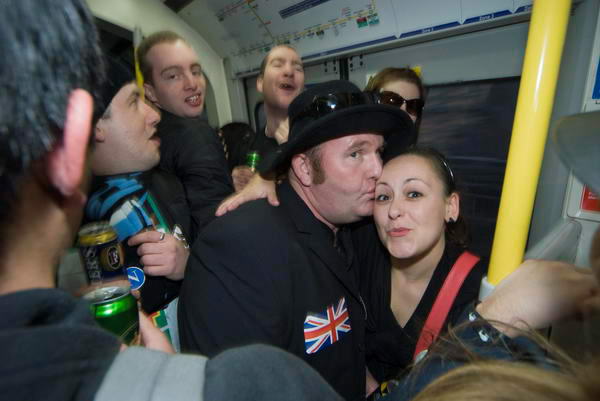
So I got as far as putting the list of pubs into my diary and working out some rough times and places to photograph, but in the end decided it wasn’t worth trying to cover, as I was unlikely to get anything as good as I did in 2008.
But the main reason I didn’t get to see the haka again was that there were other events I decided to cover and the times and places just didn’t seem to work out. I could just have caught the start of the event on my way to Enfield, but decided it wasn’t worth the detour.
Hospital closures are arousing a great deal of anger at the moment, and mass protests like that at Lewisham a week ago – though even 25,000 on the street for a local protest and the almost unanimous opposition on medical grounds as well as those who can add up pointing out the financial unreason of the proposals hasn’t yet managed to open the closed mind of the minister. But the fight continues, there and elsewhere, and another hospital affected by similar plans for downgrading is Enfield Chase, more or less at London’s northern extremity.
I knew the protest there would be much smaller than at Lewisham, and wasn’t disappointed to find a couple of hundred local people waiting for the start of the protest on a cold and windy area of grass in front of the war memorial with banners saying Save Chase Farm Hospital.
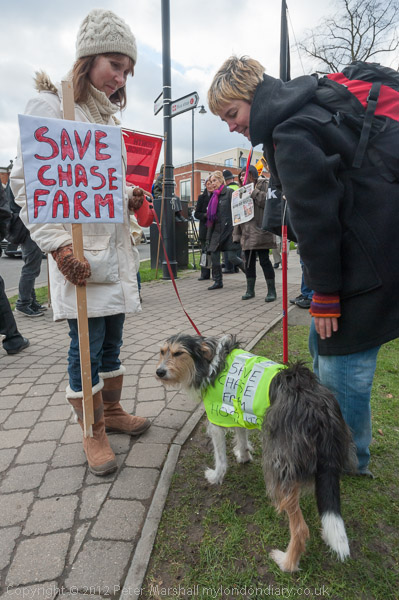
I’d been given a time for the event but hadn’t realised that the march would not start until an hour later – and that there would really be nothing happening in that hour. It seemed rather a waste of time for the protesters, standing around and getting cold in a rather out of the way location, and it seemed a bit of a waste of my time too – and had I known I’d probably have gone and had a drink with the Kiwis in Notting Hill en route to Enfield.
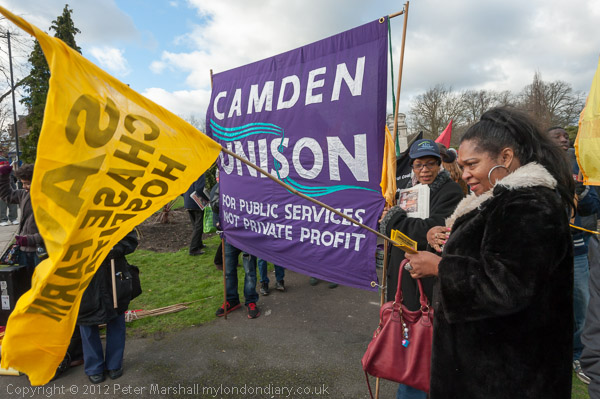
There always is something to photograph, but perhaps not a great deal. And I also had a decision to make, when I was told by one of the organisers that if I stayed with the marchers until they reached the hospital there might be a scoop for me. It wasn’t hard to work out what was likely to happen and there was a banner which read ‘Enfield Young Socialists Occupy Chase Farm‘ to help me if I had any doubts, but although it would have added to the story, a look around at those present told me that any occupation was likely to be a token one, a few hours before they were ejected by police.
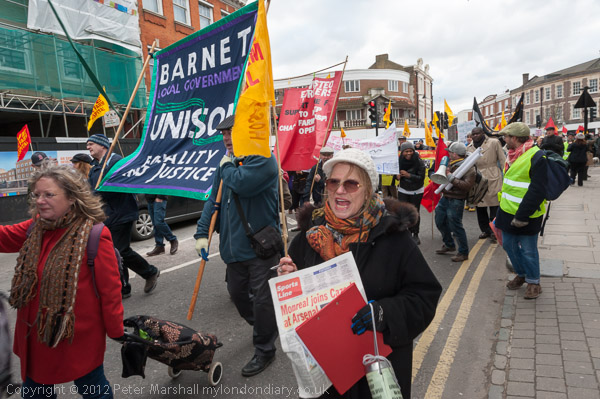
In the end I decided to stick to my plans for the day, which were to follow the march until it was time to take a train to another event I had said I would probably cover.
________________________________________________________
My London Diary : Buildings of London : River Lea/Lee Valley : London’s Industrial Heritage
All photographs on this and my other sites, unless otherwise stated are by Peter Marshall and are available for reproduction or can be bought as prints.
To order prints or reproduce images
________________________________________________________



